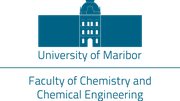Ring Imaging Cherenkov detectors for the next generation of flavor physics experiments
Duration: 1.10.2022 - 30.9.2025
Project type: Basic research project
The present-day experiments in particle physics are searching for deviations from the Standard Model of elementary particles. In this search, the study of possible deviations from lepton flavour universality is one of the currently hottest topics in high energy physics. The two most important flavour physics experiments, currently under operation, are Belle II at the SuperKEKB collider of KEK, Tsukuba, Japan, and LHCb at the Large Hadron Collider of the European Organization for Nuclear Research – CERN, Geneva. To further investigate the observed phenomena, a substantial increase in the size of the data sample is planned in the next generation of experiments with a much higher interaction rate. For operation in such an environment, the upgrade of the particle detectors is necessary.
In both experiments, a reliable charged particle identification is of paramount importance, and Ring Imaging Cherenkov detectors are employed for this task. To keep the identification capabilities or even enhance them in the new challenging environment, we are studying the upgrade of the ring imaging Cherenkov detectors of both experiments. In addition to necessary changes in the detector geometry, a photon sensor capable of the detection of single photons with high efficiency and high position resolution will have to be employed. One of the few candidates is silicon photomultipliers. For a successful deployment in such hostile environments in both detectors, we will have to solve several problems. We will have to decrease a dark count rate and their sensitivity to neutron irradiation, we will have to increase the sensor granularity, and adjust the readout electronics. In the scope of the research project, we will, by systematic studies, develop a sensor module, usable in the photon detectors of both experiments. We will determine the optimal operation parameters and test them in the Ring Imaging Cherenkov prototype.



